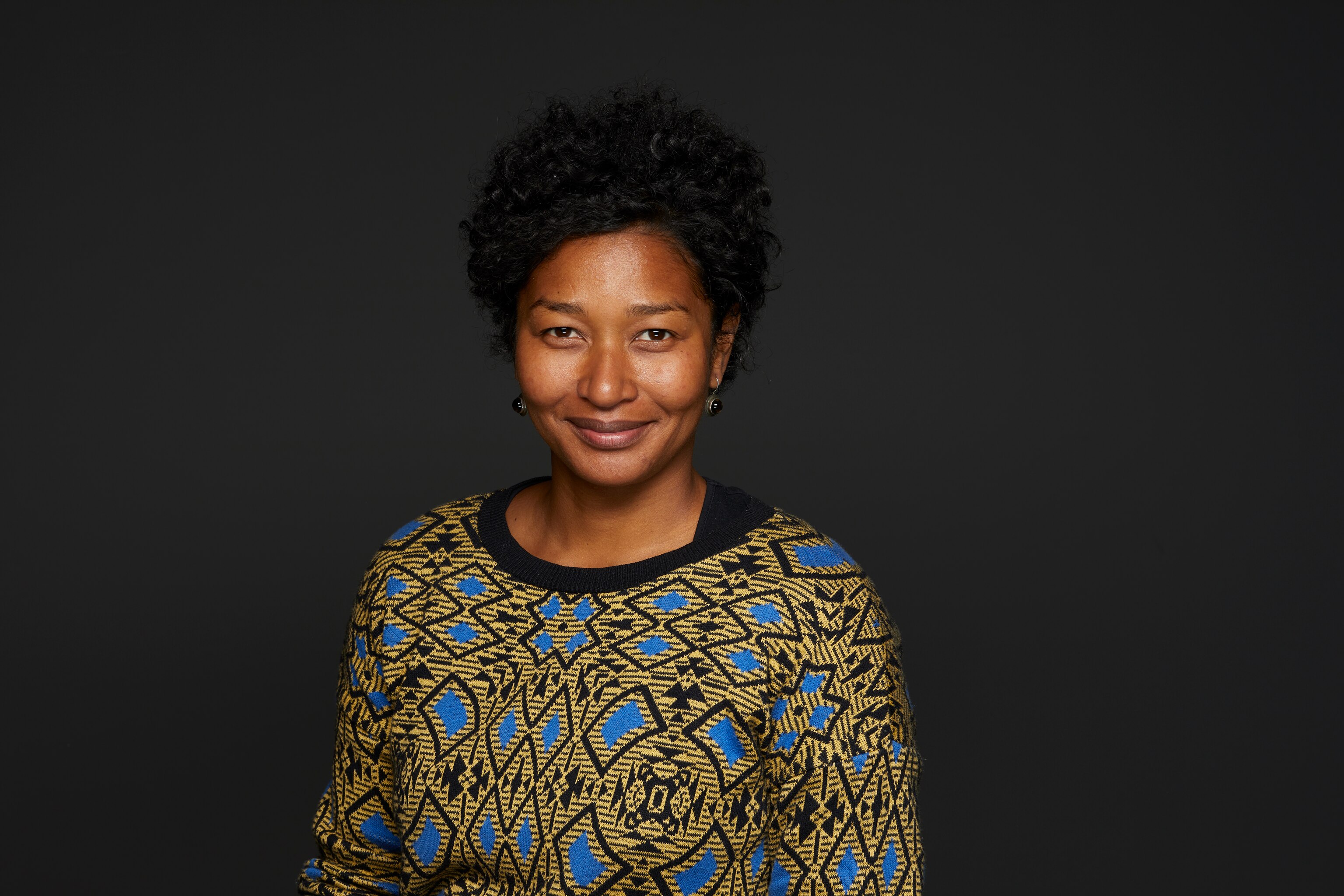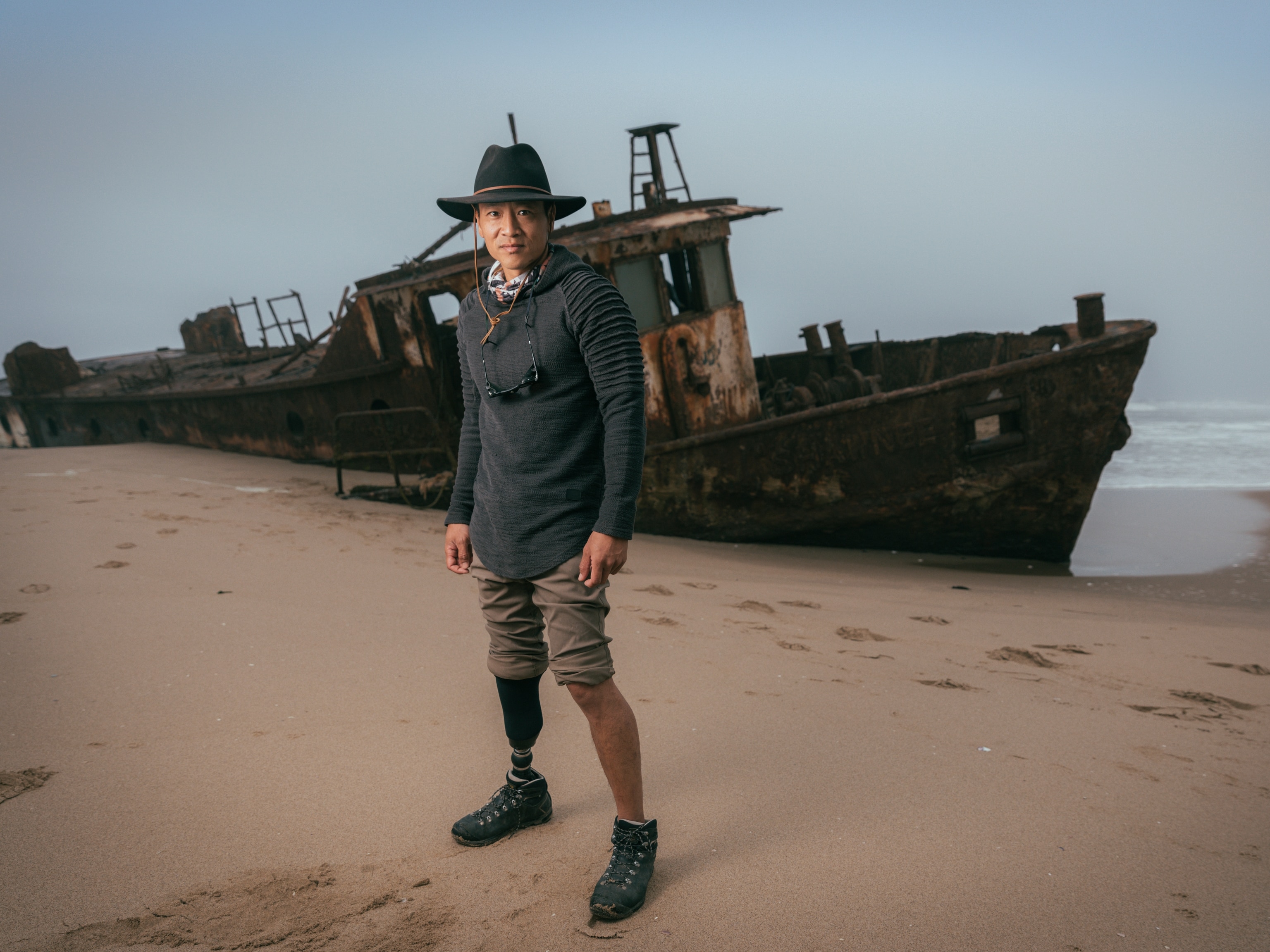Francesco Porcelli employs modern tech to answer ancient questions
The Italian physicist applies cutting-edge science to make discoveries at archaeological sites around the world.
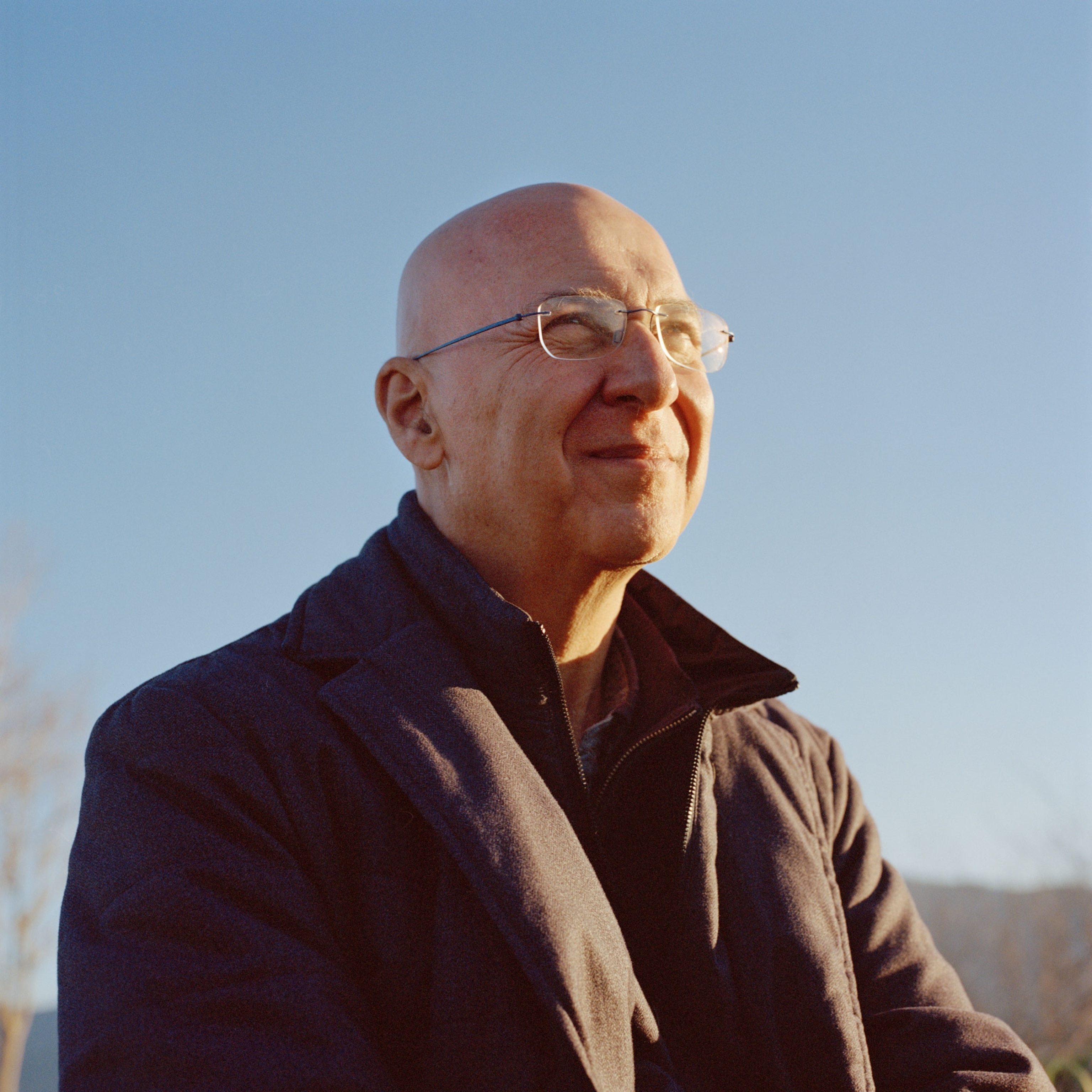
Several years ago, National Geographic Explorer Francesco Porcelli had just finished presenting his research on Egypt's pharaonic necropolis to an audience in Rome when he was proposed an idea about where next to turn his scientific eye. A retired United States Army colonel and archaeoastronomer approached him with a little-known piece of history that he nudged Porcelli to investigate: over 100 bombs fell on Pompeii in 1943 and a few are still buried underground, unexploded.
“How is that possible?" Porcelli remembers thinking. Even among locals, he says, knowledge of Second World War remnants buried under the ancient Roman city is not widespread. Only recently, during an unusually hot summer, the River Po dried up to reveal an unexploded relic that made headlines.
“This is a sad story, seldom told," Porcelli explains. As in many 20th-century conflicts, explosives were dropped in large quantities and without consideration for their collateral effects. Approximately 160 bombs rained on Pompeii as Allied forces targeted Axis supply lines. At least a dozen never exploded.
"I think there is not a concern for safety at Pompeii,” Porcelli is quick to reassure. "It’s more likely the bombs are in the areas not visited by people."
He's just returned from the famous archaeological site, where he led a search for unexploded ordinances (UXOs) around the ashes of Vesuvius using non-invasive geophysical equipment. His method could change the way that UXO identification—traditionally a precarious endeavor—is conducted.
His application of state-of-the-art radar scanning is what landed Porcelli here; he first used the technology to scour the tomb of the pharaoh Tutankhamun for hidden chambers. This marked the most comprehensive scientific mission ever conducted of the gravesite, commonly known by its tomb number, KV62.
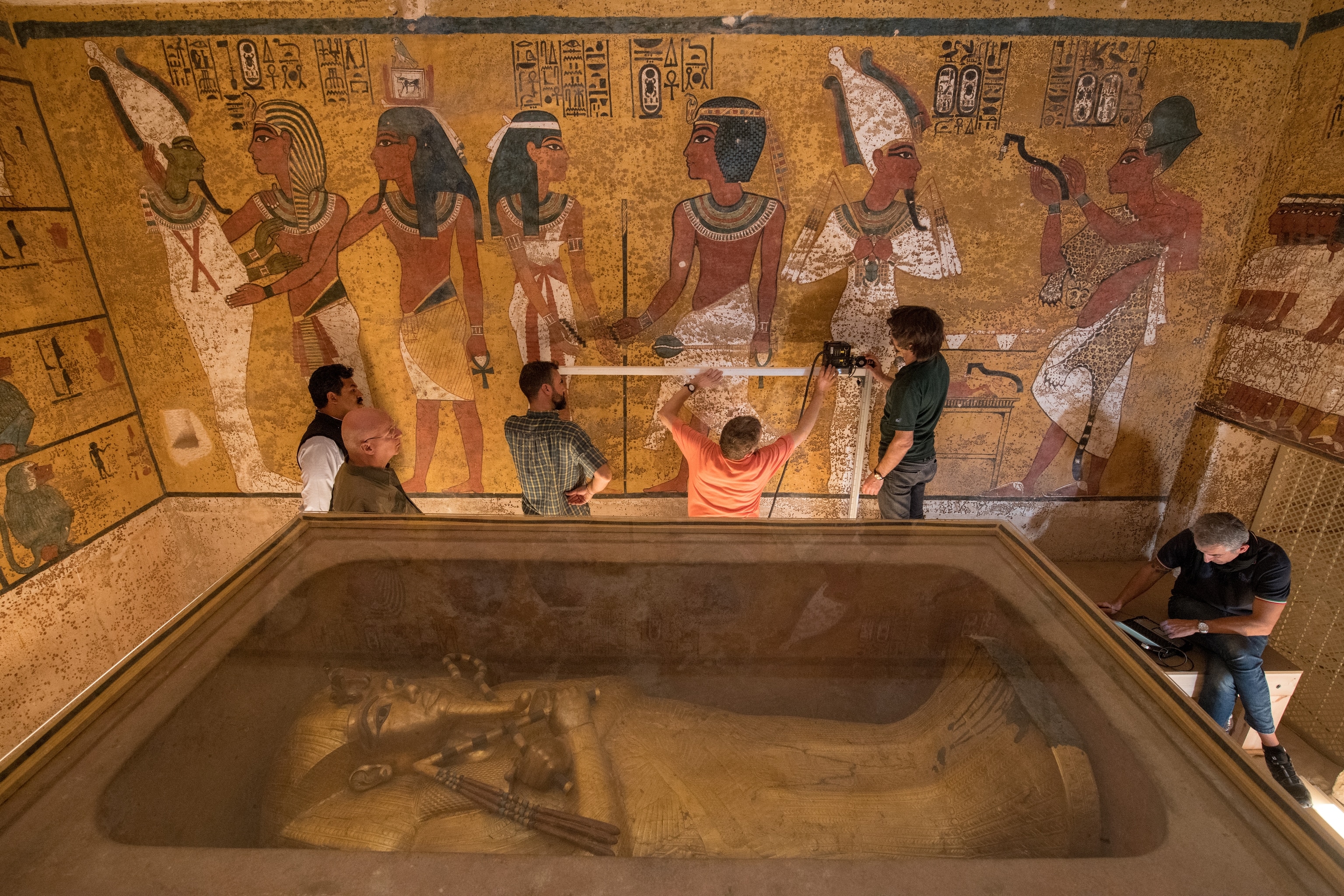
Porcelli served as the principal investigator on the project, which comprised part of a larger geophysical mapping of the Valley of the Kings, the burial site of many Egyptian pharaohs, coordinated by the Polytechnic University of Turin and funded in part by the Society.
Ground-penetrating radar scans turned up no secret rooms beyond "the boy king's" resting place, disproving a famous theory by British Egyptologist Nicholas Reeves that the young pharaoh's missing stepmother, Queen Nefertiti, lay somewhere behind the tomb walls.
Though a disappointment for archaeologists and historians, producing the never-found mummy was not Porcelli's aim, he explains, nor was he sold on the claim the body was there. He also didn't set out to spend his career buried in millennia-old civilizations. Instead, he says, the opportunities found him.
"To be honest, I got into this type of research almost by chance. My main line of research is totally different," says Porcelli, a trained physicist and professor at the Polytechnic University of Turin.
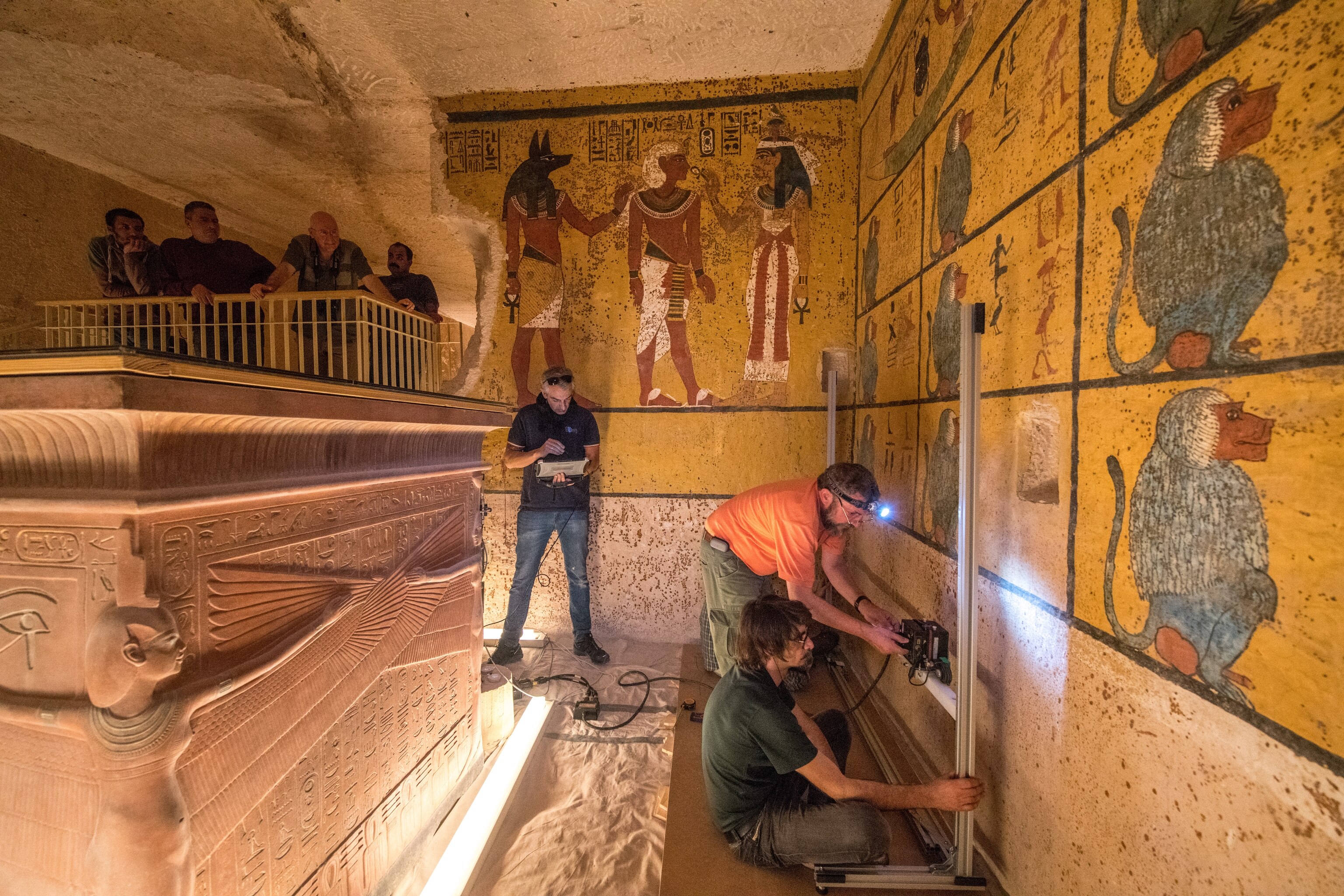
Archaeology is a far cry from his origins studying thermonuclear fusion but being a master of science is what brought him to Egypt to work as a scientific attaché to the Italian embassy, and started Porcelli on a trail of projects as a self-described "archaeo-physicist."
Connections he made as an attaché afforded him enviable access to Tutankhamun's tomb, which housed an object of intense interest to Porcelli: an iron dagger buried within a trove of treasures and practical goods intended for the pharaoh’s journey to the afterlife.
Porcelli closely examined the knife with a group of Italian and Egyptian experts. The artifact has long intrigued historians for its ornamental detail, and the fact that Egypt's Iron Age wouldn't come until millennia later, Porcelli explains. Using an x-ray fluorescence technique capable of determining the relative concentrations of different elements, Porcelli ascertained the blade was likely carved from a fallen meteorite.
"It is not alien, but it does come from outer space," Porcelli explains. The successful application of physics to cultural heritage was a milestone for him, and the wider archaeological community. "That was an achievement," he acknowledges.

From there, Porcelli turned his attention to the larger archaeological site, which has included the mapping of the Valley of the Kings, and the radar-led quest for hidden chambers at KV62.
In Pompeii, Porcelli is helping to detect possible UXOs with precision by applying highly-specialized radar techniques. The process is multifaceted, involving three types of magnetic field instruments that are able to penetrate deeper than the tools traditionally used for this type of work. His team has conducted a few surveys of the site, the latest in early October. The vast volume of data they collect requires laboratory analysis.
The challenges are also layered. The earth being swept for littered bombs is largely comprised of volcanic material, which is often magnetic itself. Though unexploded bombs are likely above this layer, crumbles of infrastructure—pillars, gates, and scaffolding—that once held up the lost city, were also reinforced with metal. "There is a [lot of] noise in the signal due to the nature of the rocks that make up the terrain. This has limited us," Porcelli explains.
Referencing the historical record allows Porcelli to narrow the search. U.S. and British military surveillance photographs show craters carved by exploded bombs. The number of craters, subtracted from the number of explosives dropped according to pilot reports, give hints about how many bombs may remain live. Then, non-invasive radar scans, capable of recognizing metallic objects up to a depth of five meters, are put to work.
Using this strategy, with the knowledge of the relative mass of a WWII bomb—between 250 and 500 pounds—Porcelli is confident his team will locate one.
"So far we have not found an unexploded bomb," he says, remaining optimistic. "But we still have good hints of suspicious spots to investigate further. The search goes on."
Porcelli is hopeful that a retrieval here will aid in recovering the millions of tons of UXOs he's come to learn are still hidden across the globe. "If we succeed in finding a bomb in a very famous site, then perhaps this will raise public awareness about the danger of unexploded ordinances," he says, adding that children, the most curious about foreign-looking objects, are often the casualties.
Employing technology to conduct excavations, from the crypts of Egyptian pharaohs to Pompeii's burial grounds, could reinforce the importance of injecting new technology into established academic routines. "We are not archaeologists," he acknowledges, "so we should work in collaboration with archaeologists." His primary motivation is to pave the way for more multidisciplinary approaches to answering questions about the past.
"I like to say that physics is changing the way archeological research will be done in the third millennium," he says. "I believe that maybe 50 years from now archaeological research will be completely different because of new technologies."
ABOUT THE WRITER
For the National Geographic Society: Natalie Hutchison is a Digital Content Producer for the Society. She believes authentic storytelling wields power to connect people over the shared human experience. In her free time she turns to her paintbrush to create visual snapshots she hopes will inspire hope and empathy.

